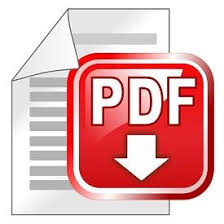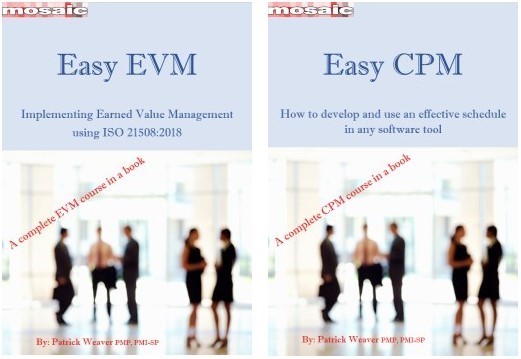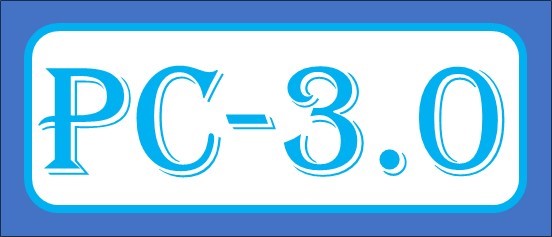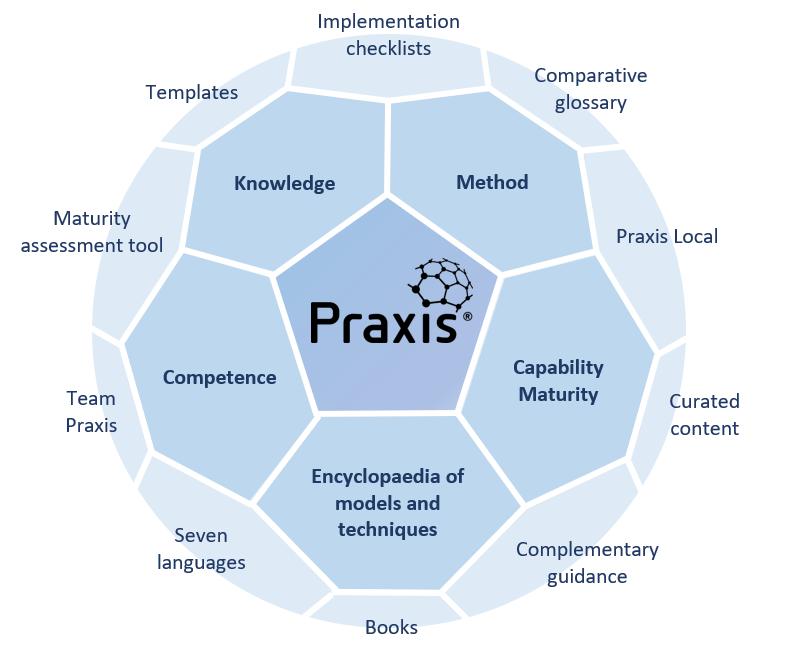Location:
PMKI > Project
Controls and Scheduling > Integrated Project
Controls.


- Project Controls Overview
- Project Control Functions &
Techniques
- Future Trends in Project Controls
- Project Control & CPM Failures
and Challenges
- Useful External Web-links &
Resources.
Other related sections of the PMKI:
- PMOs (Project, Program or
Portfolio Management Offices)
- Monitor and control
project work (PMBOK)
 The
five functions of management define by Henri Fayol in 1916
include planning work, organizing and directing resources
to perform the work, and controlling the performance of
the work based on feedback and observation (see
more on general management). The objective of
project controls is to assist the project's management in
the planning of the project's work, and then to provide
the feedback needed to maintain effective control and
manage the ongoing activities. This requires the
integration of the various project controls functions
focused on scope, cost, and time, as a minimum, to develop
the information needed to assist in both the management of
the project and communication with stakeholders.
The
five functions of management define by Henri Fayol in 1916
include planning work, organizing and directing resources
to perform the work, and controlling the performance of
the work based on feedback and observation (see
more on general management). The objective of
project controls is to assist the project's management in
the planning of the project's work, and then to provide
the feedback needed to maintain effective control and
manage the ongoing activities. This requires the
integration of the various project controls functions
focused on scope, cost, and time, as a minimum, to develop
the information needed to assist in both the management of
the project and communication with stakeholders.
Projects, and project management have a long history, this is documented in Origins, and trends in, modern project management.
WP: Project Controls – A Definition. Project controls are the data gathering, management and analytical processes used to predict, understand and constructively influence the time and cost outcomes of a project or program through the communication of information in formats that assist effective governance and management decision making.
Prs: Setting your project up for success. A brief summary of the key elements needed for project success.
Blg: Setting up a project controls system for success. A couple of hour’s hard thinking focused on the control systems that will be needed and useful can make the difference between project success and failure!
WP: Proactive Project Surveillance. Effective surveillance systems are needed to identify which of an organization's projects are currently candidates for failure, in sufficient time to take action that will change the probability in a favorable way.
Art: Assurance for high risk projects. Project or Program Assurance is a discipline that seeks to provide an independent and objective oversight of the likely future performance of major projects to those responsible for sanctioning, financing or insuring such undertakings.
Blg: Prediction is very difficult, especially about the future. The questions posed in this post is how accurate do we need to be with our projections to be useful? And how do we persuade managers to make use of the predictions?
Blg: Project controls do not determine the future looks at why esoteric detail is detrimental to overall projects success, short term work should be planned in adequate detail. Future work only requires a sensible budget to show the overall strategy (see also Rolling Wave and Schedule Density).
Art: ‘Not knowing’ is no longer an option. Ethical governance and management requires timely access to accurate information. A key 'controls' function is ensuring the information used to manage the organization is accurate.
Prs: Projects controls using integrated data. The future of project time management as an integrated part of an overall project information system.
WP: Gateways and Score Cards. Two approaches to determining the on-going viability of a project and measuring its success are ‘gateway reviews’ and balanced scorecards, this paper provides a brief overview of both.
Art: Three Steps to Validate a Variance. Variances are to be expected, but before taking action to bring performance back into alignment with the plan, it is a really good idea to make sure the variance you are seeing in the control systems is real and significant.
PP: The Project Start-Up Conundrum. At the time when the project team can exert the greatest influence on a project's overall success, the team itself is forming and at its least effective!!! Solutions include:
PP: Calculating Completion. Tools used for assessing status, and predicting the completion of projects include: Bar Charts, Burndown Charts, Kanban Boards, Velocity, CPM, EVM + ES, and Work Performance Management (WPM). This paper considers each of these options against a highly simplified project, with a focus on the subjective and objective information available from each tool and how they compare. Download the original PMWJ version of this paper.
Prs: Predicting
Completion, a Governance Requirement.
Governance has three basic functions:
1. Designing the organization’s culture, ethics, and
objectives to provide the best outcome for its
stakeholders.
2. Building a management team that is capable of achieving
the objectives.
3. Requiring assurance and feedback from management that
they are delivering the intended outcomes.
Within this framework, organizations need to know when
their projects are expected to finish!Not knowing is not
an option! This presentation looks at the challenges
of assessing status and predicting completion when CPM is
ineffective and how WPM can solve the challenge. For more
on the governance challenges of 'not knowing' see: Organizational Governance and Project
Controls.
PP: Improving Schedule Management. When used as a dynamic motivational tool, focused on maintaining the momentum of work on a project, the schedule has much to contribute to the overall success of a project. Project Management grew out of the ideas of Scientific Management, and the catalyst for the emergence of PMI and other associations was the rapid spread of scheduling in the 1960s. However, the emergence of the ‘knowledge worker’ and ‘soft projects’ is challenging the concepts of ‘command and control’ derived from Scientific Management and embedded in traditional scheduling practice. Modern business projects are complex and dynamic; new paradigms are emerging based on complexity theory and social network theory; and these ideas challenge the traditional role of the ‘contract schedule’.
This paper explores these emerging ideas and defines a new role for the project schedule and the project scheduler within the complex, dynamic, collaborative environment that defines many modern projects and programs. The schedule shifts from posing as an ‘accurate prediction of the future’ (if this was ever possible) to a dynamic tool used for communication, coordination and motivation of the project team. The key focuses for effective schedule management in the 21st century and the attributes required of a ‘good schedule’ and an ‘effective scheduler’ are described; defining a new role for the project schedule and the project scheduler within the complex, dynamic, collaborative environment that defines many modern projects.
Much of the information available on this website has been consolidated into two easy-to-read books Easy EVM and Easy CPM:
 Both are designed as a course-in-a-book to provide
practical training and guidance to individuals and
organizations involved in developing or using, either
Earned Value Management, or CPM schedules based on the
Critical Path Method (CPM).
Both are designed as a course-in-a-book to provide
practical training and guidance to individuals and
organizations involved in developing or using, either
Earned Value Management, or CPM schedules based on the
Critical Path Method (CPM).
Easy CPM is designed to act as a reference
and practice guide for people implementing CPM scheduling
after they have learned to use the CPM scheduling software
of their choice.
See more, free preview and buy ($35, immediate download).
 PP: Project Controls
3.0 (PC-3.0). The purpose of this paper is to
provide an overview of Project Controls 3.0 (PC-3.0).
PC-3.0 is designed to build onto the existing developments
in project management and project controls to:
PP: Project Controls
3.0 (PC-3.0). The purpose of this paper is to
provide an overview of Project Controls 3.0 (PC-3.0).
PC-3.0 is designed to build onto the existing developments
in project management and project controls to:
1. Overcome the problems apparent in the current diverse
range of project management and controls practices,
2. Implement a simple, robust system that is effective for
all types of project delivery, and
3. Refocus the controls effort on helping management craft
success, rather than report on history.
This paper is in two parts, the first part looks at the
evolution of project controls and identifies some of the
current issues and challenges. The second is a brief
overview to introduce the concept of PC-3.0.
Click through to see more on Project Controls 3.0 (PC-3.0)
Blg: The future of project controls. Using modern technology to focus on what really matters, resources accomplishing work in the optimum sequence for each location.
Prs: Projects controls using integrated data. The future of project time management as an integrated part of an overall project information system.
Prs: Project Controls in the C21 – What works / What’s fiction. This paper takes a controversial look at cost benefit and ‘usefulness’ of scheduling, cost control and Earned Value systems as project control mechanisms versus their use as pro active project management aids. Project management is transitioning from a focus on the ‘iron triangle’ of time, cost and output (scope + quality) defined in the late 1960s; towards a future that focuses on maximizing stakeholder value through the effective application of ‘soft skills’ in an environment that increasingly recognizes ‘risk’, ‘uncertainty’ and ‘complexity’ as key challenges facing the project team. For the tools that defined ‘project management’ to remain relevant in the 21st Century a new paradigm is needed, this paper suggests the changes in skills, attitudes and practices needed to keep scheduling, cost control and EV relevant in the coming years.
Prs: Trends in Project Controls - AIPM Update. A review of project controls and their ability to predict outcomes effectively.
Art: Radical Uncertainty. Making predictive models more mathematical does not improve the accuracy of the predictions, a different paradigm is needed in a complex world.
PP: Scheduling in the Age of Complexity. This paper suggests that a radically different approach is needed to make scheduling relevant and useful in the 21st Century. Starting with the ideas derived from Complexity Theory, Complex Responsive Processes of Relating (CRPR) and the concept of the project team as a ‘Temporary Knowledge Organization (TKO) one can see the delivery of the project being crafted by thousands of individual decisions and actions taken by people who are ‘actors’ within the social network of the project team and its immediate surrounds. The role of ‘project management’ is to motivate, coordinate and lead the team towards the common objective of a successful project outcome. The project scheduler has a key role in this complex environment provided the right attitudes, skills and scheduling techniques are used in the optimum way. This paper:
Prs: Baked In Optimism – Why so many projects fail. This presentation looks at two processes that are ‘baked into’ standard project management estimating and control to show how recommended good practices are still optimistically biased. When preparing an estimate good practice recommends using Monte Carlo to determine an appropriate contingency and the level of risk to accept, but the typical range distributions used are biased – they ignore the ‘long tail’. When reporting progress, the estimating bias should be identified and rectified to offer a realistic projection of a project outcome. Standard cost and schedule processes typically fail to adequately deal with this challenge meaning the final time and cost overruns are not predicted until late in the project. This presentation highlights some of the causes for these problems - View the webinar on our Risk Assessment Page.
DP: £500m Project Failure - Riding A Tiger: some lessons of Taurus. The collapse of project Taurus, the London Stock Exchange’s £500 million IT venture in 1993 still ranks as one of the major fiascos of business history. This paper highlights key mistakes in the project’s design and discusses their implications for management.
PP: The Paradox of Project Control in a Matrix Organization. This paper explores the hypothesis that, within complex matrix organizations, the ‘zone’ between the strategic vision set by senior management and the projects created to fulfill the vision, is a highly complex and dynamic organism and its reaction to stimuli cannot be predicted. Succeeding in this environment needs a different management paradigm from that developed for management in traditional project industries. The characteristics of a complex matrix organization include: multiple/competing lines of authority, virtual and part time teams, divergent objectives, and many competing levels and types of authority. This paper describes the paradigm shift in management thinking needed to succeed in managing projects across this ‘zone’. To succeed, managers need to combine vigilance and agility to identify and capitalize on unexpected gains and deal with unexpected problems.
Prs: Practical project controls – the art of getting to ‘Done’! Getting to ‘done’ is the objective of any project, done on time, done on budget, and done to the satisfaction of stakeholders. Most projects fail to achieve this. This presentation looks at the reasons for this failure and suggest a practical framework for successfully getting your projects to ‘done’ including:
Art: The Scheduling Conundrum. Effective scheduling makes a significant difference to project success but in most projects, the schedule is ignored, bad scheduling practice is the norm, and most projects finish late.
Art: Problems with scheduling practice. A brief look at the three major problem areas affecting scheduling practice.
Art: The problem with CPM. The problem with scheduling and CPM is not the technology, it’s a lack of skills on the part of the people employed as schedulers (see more on skills development).
Blg: Critical confusion – when activities on the critical path don’t compute…… The use of Finish-to-Finish and Start-to-Start links (particularly in combination) can cause significant issues in calculating the overall project duration.
The Guild of Project controls. Developing standards and certifications based on the Project Controls Compendium and Reference (GPCCaR), developed and managed by a global project controls community: http://www.planningplanet.com/guild
Project Controls Online ("PCO"). A large repository of Project Controls knowledge and information: https://projectcontrolsonline.com/
 Praxis
- A free framework for the management of projects,
programmes and portfolios. It includes a body of
knowledge, methodology, competency framework and
capability maturity model. The framework is supported by a
knowledge base of resources and an encyclopedia. https://www.praxisframework.org/
Praxis
- A free framework for the management of projects,
programmes and portfolios. It includes a body of
knowledge, methodology, competency framework and
capability maturity model. The framework is supported by a
knowledge base of resources and an encyclopedia. https://www.praxisframework.org/
 For papers on Project Controls presented
at the PGCS Annual Symposium see:
For papers on Project Controls presented
at the PGCS Annual Symposium see:
https://www.pgcs.org.au/papers/controls/